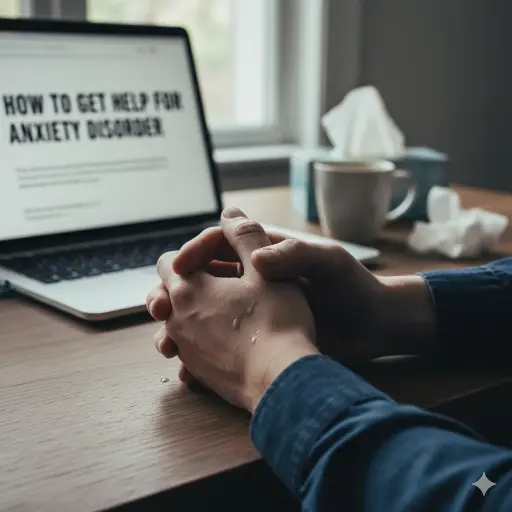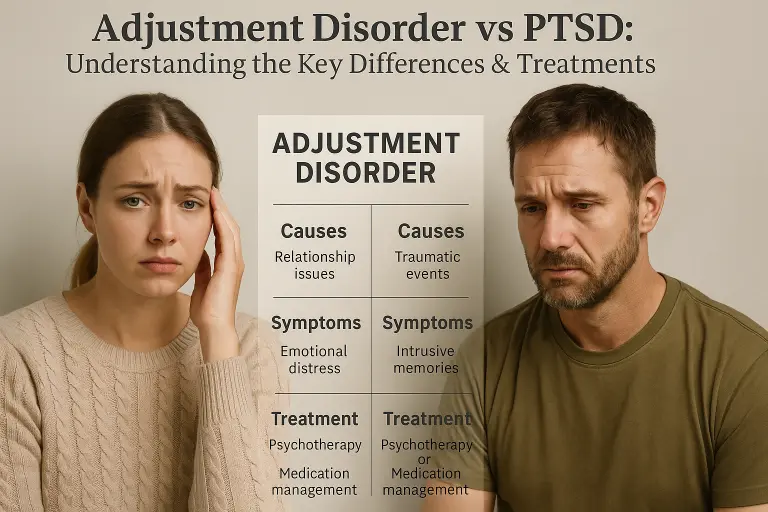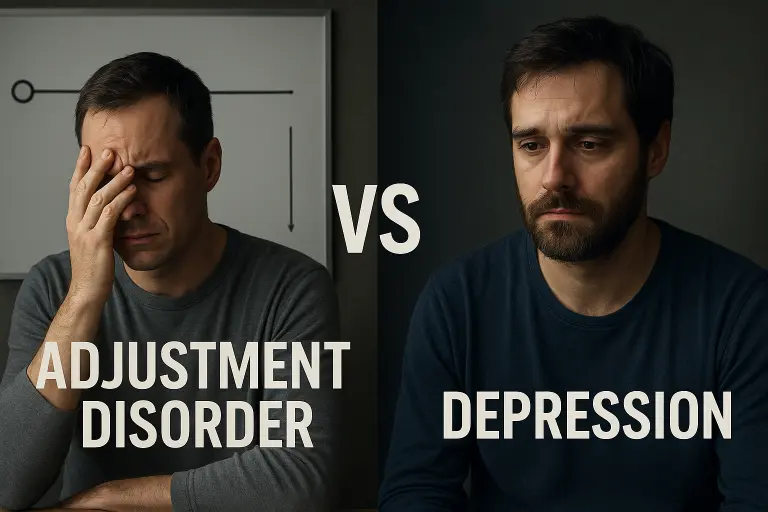Understanding the Different Types of Mental Health Disorders
Unveiling the Spectrum of Mental Health Conditions

An Educational Guide to Mental Health Disorders
Mental health disorders encompass a wide array of conditions affecting thoughts, emotions, behaviors, and perceptions. With over 200 different types documented, understanding their characteristics, origins, symptoms, and treatment options is essential for promoting awareness, reducing stigma, and encouraging timely intervention. This comprehensive overview aims to inform readers about the diverse landscape of mental health conditions, their classifications, causes, and supports available.
Classification and Diversity of Mental Disorders
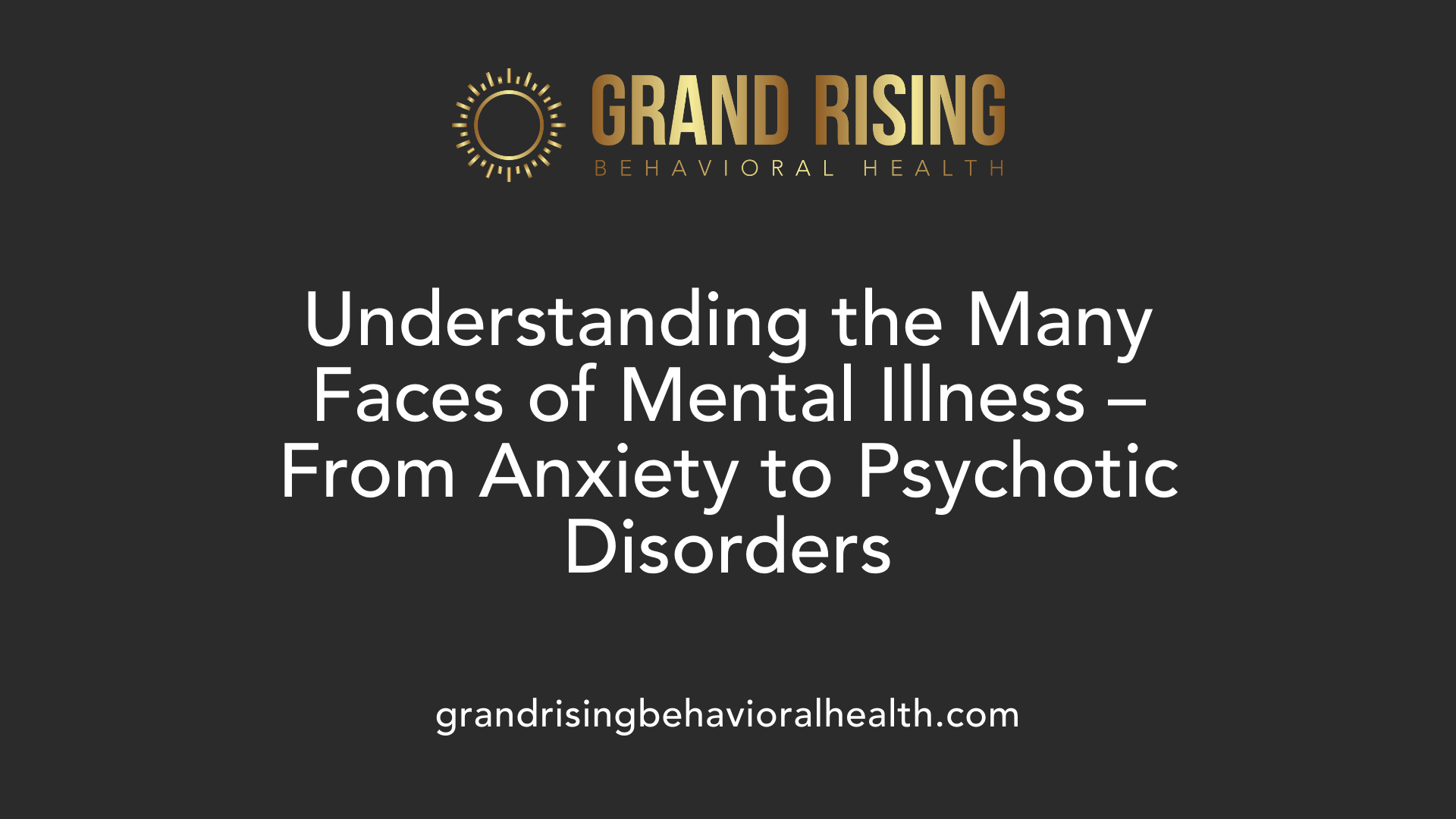
What are the different types of mental health conditions?
Mental health conditions cover an extensive spectrum of disorders that influence how individuals think, feel, perceive reality, and behave. These conditions often lead to emotional distress, social difficulties, and impairments in daily functioning.
Among the various categories, anxiety disorders are highly prevalent and include generalized anxiety disorder, panic disorder, social phobias, specific phobias, obsessive-compulsive disorder (OCD), and post-traumatic stress disorder (PTSD). Mood disorders, such as depression and bipolar disorder, involve persistent alterations in emotional states, ranging from prolonged sadness to episodes of mania. Psychotic disorders, including schizophrenia and delusional disorders, are characterized by distorted perceptions and thoughts, often with symptoms like hallucinations and delusions.
Dissociative disorders, such as dissociative identity disorder and dissociative amnesia, involve disruptions in consciousness, memory, and identity. Eating disorders—like anorexia nervosa, bulimia nervosa, and binge eating disorder—are marked by abnormal eating habits and concerns about body image. Additionally, neurodevelopmental conditions such as autism spectrum disorder (ASD) and attention-deficit/hyperactivity disorder (ADHD) affect social, behavioral, and cognitive development.
Personality disorders, including borderline personality disorder and narcissistic personality disorder, feature enduring maladaptive traits impacting relationships and self-perception. Many of these illnesses are manageable with appropriate medical, psychological, and social interventions, but access to effective care varies globally.
What are the most common types of mental health disorders?
Anxiety and depression stand out as the most widespread mental health issues worldwide. In 2019, approximately 301 million people suffered from anxiety disorders, affecting both children and adults. These disorders are characterized by excessive fear, worry, and physical symptoms like rapid heartbeat and sweating, which can interfere with daily life.
Depression was similarly prevalent, impacting around 280 million individuals globally. It manifests through a persistent low mood, loss of interest in activities, fatigue, feelings of worthlessness, and, in severe cases, thoughts of self-harm or suicide.
Other common mental health conditions include bipolar disorder, which involves oscillations between depressive and manic episodes, and schizophrenia, a severe psychotic disorder marked by hallucinations, delusions, disorganized thinking, and social withdrawal.
Neurodevelopmental disorders such as ADHD and autism spectrum disorder (ASD) are also highly prevalent among children and affect cognitive, social, and behavioral development. Eating disorders including anorexia, bulimia, and binge eating disorder are observed across age groups and genders, often linked to emotional regulation and self-image.
In terms of prevalence, these conditions impact millions worldwide, requiring robust health systems for diagnosis and treatment. They also present unique challenges in different settings, especially during emergencies or conflict, where mental health needs often go unmet.
The extensive range of recognized mental illnesses
Mental health professionals recognize a remarkably broad array of mental illnesses, with over 450 disorders cataloged across diagnostic systems like the DSM (Diagnostic and Statistical Manual of Mental Disorders) and ICD (International Classification of Diseases). These classifications include:
| Major Disorder Category | Examples | Description |
|---|---|---|
| Neurodevelopmental Disorders | Autism spectrum disorder, ADHD | Affect early brain development, impacting social and cognitive skills |
| Mood Disorders | Major depression, bipolar disorder | Involve fluctuations in mood, energy, and activity levels |
| Anxiety Disorders | Generalized anxiety, phobias, OCD | Characterized by excessive fear, worry, and related behaviors |
| Psychotic Disorders | Schizophrenia, schizoaffective disorder | Distortions in perception, thinking, and consciousness |
| Eating Disorders | Anorexia nervosa, bulimia nervosa | Disordered eating behaviors and distorted body image |
| Personality Disorders | Borderline, narcissistic, antisocial | Enduring personality traits that cause distress or social problems |
| Trauma and Stressor-Related Disorders | PTSD, acute stress disorder | Reactions to traumatic events causing psychological impairment |
| Substance-Related and Addictive Disorders | Alcoholism, drug dependence | Disorders related to substance misuse affecting physical and mental health |
| Dissociative Disorders | Dissociative identity disorder | Disruptions in consciousness, memory, identity |
| Somatic Symptom Disorders | Conversion disorder | Physical symptoms with no discernible medical cause |
| Sleep-Wake Disorders | Insomnia, narcolepsy | Disruptions in sleep patterns impacting daily life |
| Neurocognitive Disorders | Dementia, Alzheimer’s disease | Decline in cognitive function associated with aging or disease |
This cataloging facilitates diagnosis, research, and treatment planning. Despite the vast number of recognized conditions, they all share the potential for management and recovery through tailored interventions.
In summary, mental health disorders form a diverse and complex group that affects millions across the globe. Understanding this diversity helps in reducing stigma, improving diagnosis, and broadening access to effective treatment options.
Understanding Causes and Risk Factors
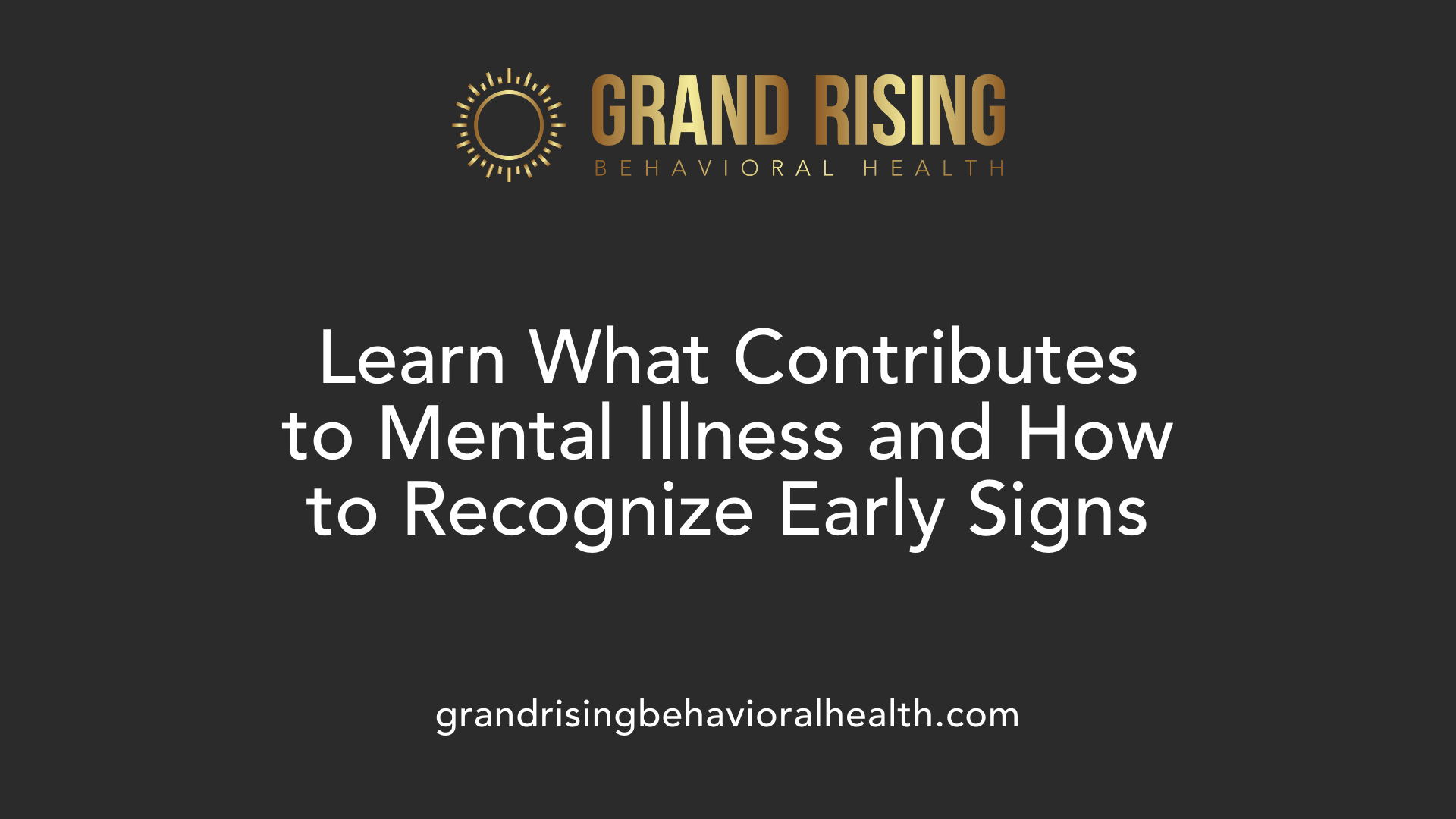
What are the primary causes and risk factors for mental health disorders?
The development of mental health disorders is often the result of a complex combination of various factors. These include genetic predispositions, where certain inherited traits increase one’s vulnerability to conditions like depression, bipolar disorder, or schizophrenia. Biological influences, such as neurotransmitter imbalances, structural differences in the brain, or brain injuries, also significantly contribute.
Environmental and psychological stressors are common triggers. Experiences like trauma, abuse, social isolation, discrimination, or adverse childhood events can set the stage for mental health issues to emerge or worsen. Chronic stress from difficult life circumstances further adds to this risk.
In addition, lifestyle choices and external influences play a vital role. Substance use, poor nutrition, limited physical activity, exposure to toxins, and medical conditions like chronic illness can all impact mental well-being. When these biological and environmental factors intersect, they create a heightened vulnerability that may lead to various mental health conditions.
Recognizing these diverse causes underscores the importance of a holistic approach to prevention and treatment. Efforts to improve mental health must consider genetic background, life experiences, and lifestyle habits to effectively support individuals facing mental health challenges.
What are common symptoms and signs of mental health conditions?
Symptoms of mental disorders are varied and depend largely on the specific diagnosis. Broadly, individuals may experience persistent feelings of sadness or depression, feelings that they cannot shake or that interfere with daily activities. Excessive worry, fears, or mood swings are also indicators of underlying mental health issues.
Behavioral shifts are common, such as withdrawal from social interactions, loss of interest in activities once enjoyed, or difficulties managing emotions. Physical signs might include changes in sleep patterns—insomnia or oversleeping—as well as fatigue, difficulty concentrating, or unexplained physical complaints like headaches or stomach pain.
In more severe cases, perceptual disturbances such as hallucinations or delusions might occur, especially in psychotic disorders like schizophrenia. Emotional and behavioral responses to stress, including thoughts of self-harm or suicide, signal urgent need for help.
Because symptoms vary widely across disorders, early recognition can be challenging but is crucial. Effective treatment hinges on identifying these signs early to mitigate the impact of mental health conditions.
More Info Search Query
To learn more, searching for terms like "causes and risk factors for mental disorders," "genetic and environmental influences on mental health," and "lifestyle impact on mental health" can provide deeper insights. Resources from organizations like the World Health Organization (WHO), National Institute of Mental Health (NIMH), and reputable health websites offer valuable information on how biological, environmental, and lifestyle factors intersect in mental health.
Understanding these contributors helps reduce stigma, promotes early intervention, and encourages comprehensive care tailored to individual needs. By addressing genetic predispositions, environmental stressors, and lifestyle influences, society can better support those experiencing mental health challenges and work towards prevention.
Identifying Manifestations and Symptoms
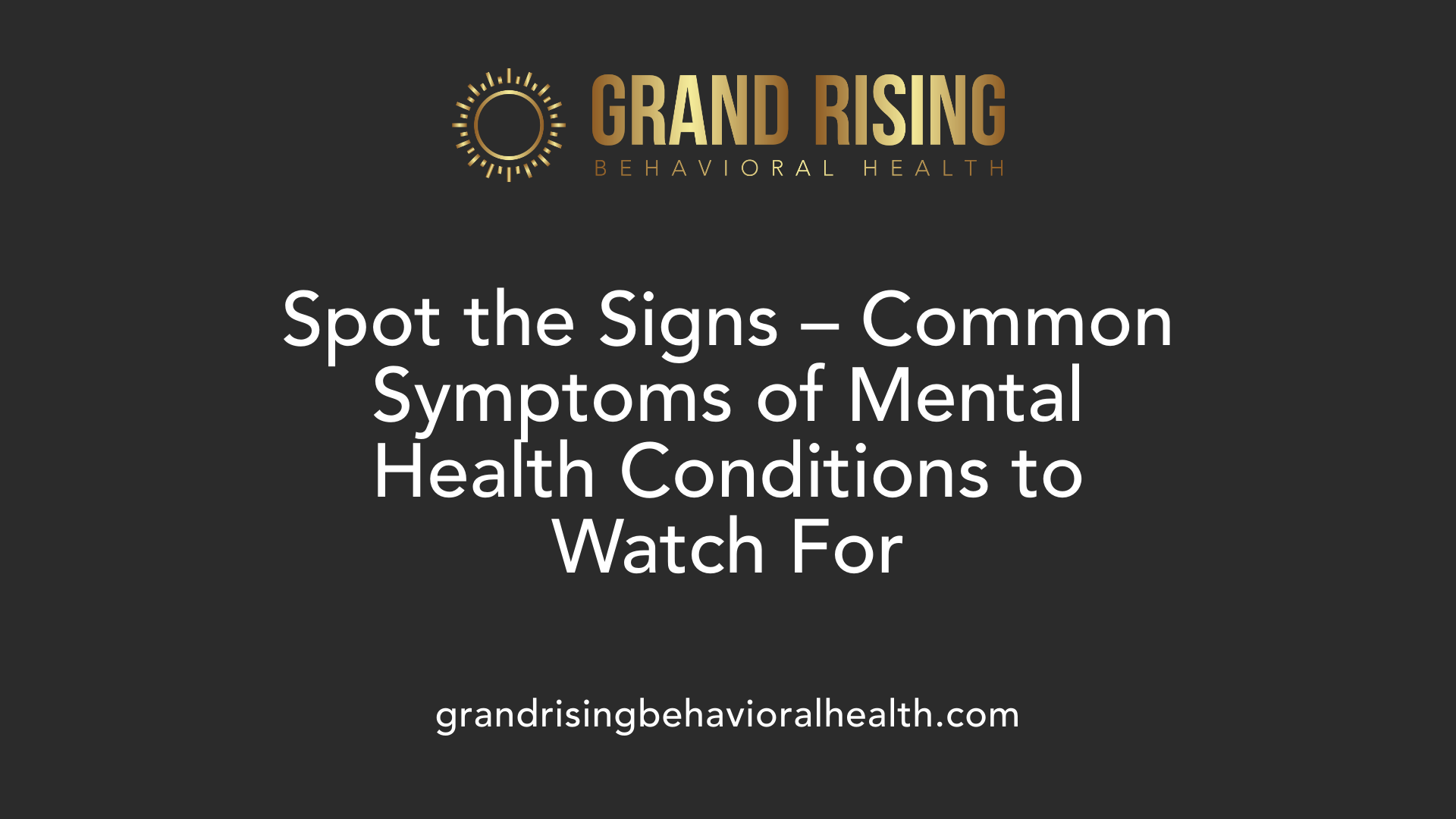
What are common symptoms and signs of mental health conditions?
Identifying mental health issues begins with recognizing a range of behavioral, emotional, and physical signs. Many individuals experience persistent feelings of sadness, hopelessness, or depression that can interfere with daily functioning. Excessive worry, fear, or panic attacks are typical of anxiety disorders. Mood swings, irritability, or episodes of euphoria may point to bipolar disorder. Withdrawal from social activities, reduced interest in hobbies, or difficulty concentrating are also common indicators.
Physical symptoms often accompany emotional and behavioral changes. These include sleep disturbances such as insomnia or oversleeping, fatigue, unexplained headaches, stomach pains, or other bodily complaints without an apparent medical cause. Some may have distorted perceptions, such as hallucinations or delusions, especially in psychotic disorders like schizophrenia.
Risk behaviors or thoughts of self-harm and suicide may signal a serious mental health concern. Recognizing these signs early is crucial, as they can vary significantly depending on the specific disorder. When symptoms are persistent and impact daily life or relationships, seeking prompt medical evaluation can lead to effective diagnosis and treatment.
What are the characteristic features of common mental health disorders?
Each mental health disorder presents with distinct symptoms that help in diagnosis and management. For example:
- Anxiety Disorders: Commonly involve excessive fear, worry, and physical symptoms like rapid heartbeat, sweating, trembling, and avoidance of feared objects or situations.
- Depression: Usually manifests as a persistent low mood, loss of interest or pleasure in activities, fatigue, feelings of guilt, and sometimes thoughts of self-harm or suicide.
- Bipolar Disorder: Characterized by mood episodes ranging from depression to mania, which features elevated or irritable mood, increased activity, reduced need for sleep, and impulsive behaviors.
- Schizophrenia: Includes hallucinations (perceiving things that aren’t real), delusions (strong false beliefs), disorganized speech, and impaired social interactions.
- Eating Disorders: Such as anorexia nervosa, involve extreme weight loss, distorted body image, obsessive behaviors around food, and health risks.
Understanding these distinctive features enables healthcare providers to accurately diagnose and tailor treatment plans. Early intervention can substantially improve outcomes for individuals with mental health conditions.
| Disorder Type | Key Symptoms | Additional Details |
|---|---|---|
| Anxiety Disorders | Excessive fear, worry, physical signs | Includes panic disorder, phobias, OCD, PTSD |
| Mood Disorders | Persistent sadness or mood swings | Includes depression, bipolar disorder |
| Psychotic Disorders | Hallucinations, delusions | Example: schizophrenia |
| Eating Disorders | Body image distortion, weight changes | Anorexia nervosa, bulimia |
| Personality Disorders | Inflexible traits, relationship difficulties | Borderline, narcissistic |
| Trauma-related Disorders | Flashbacks, emotional numbness | PTSD, complex PTSD |
Recognizing symptoms across these categories guides timely medical intervention. It also helps in reducing stigma, encouraging individuals to seek help without fear of judgment.
Diagnosis and Classification of Mental Disorders
How are mental health disorders diagnosed and classified?
Diagnosing mental health disorders usually involves a comprehensive evaluation conducted by trained mental health professionals such as psychologists, psychiatrists, or clinical social workers. During this process, clinicians rely on structured interviews, detailed patient histories, and assessment tools tailored to identify the presence of specific symptoms.
The diagnosis often begins with careful observation and discussion of the symptoms—such as mood changes, behavioral patterns, thought processes, and emotional responses. Since biological markers are not yet definitive for most mental disorders, diagnosis hinges on operationalized criteria outlined in standard classification manuals.
The two most prominent systems used globally are the DSM-5 (or DSM-5-TR, which is the Text Revision) and the ICD-11. These manuals categorize disorders based on observable signs and symptom reports rather than solely biological tests. They also guide clinicians in ruling out other medical conditions that might mimic mental health symptoms through physical examinations and laboratory testing when indicated.
Overall, the diagnosis of mental health disorders involves a combination of clinical judgment, operationalized criteria, and sometimes medical testing, aiming for accurate, reliable, and sensitive assessments tailored to cultural contexts.
What is the role of diagnostic manuals like DSM-5 and ICD-11?
Diagnostic manuals such as the DSM-5 and ICD-11 are essential tools for standardizing mental disorder classifications worldwide. They serve multiple roles in clinical, research, and policy contexts.
The DSM-5, published by the American Psychiatric Association, provides detailed symptom-based criteria for each recognized disorder. It emphasizes dimensional assessments, recognizing that symptoms exist on a spectrum, which helps in understanding the severity and nuances of each condition.
The ICD-11, maintained by the World Health Organization (WHO), offers a global classification system that covers a broad range of mental, neurological, and behavioral disorders. It provides operational criteria that enable clinicians worldwide to diagnose mental health conditions consistently.
Both manuals facilitate effective communication among healthcare providers, support research studies with standardized definitions, and guide treatment planning. They help in differentiating between disorders with overlapping symptoms, understanding comorbidity, and assessing prevalence and treatment outcomes.
In summary, DSM-5 and ICD-11 are foundational for reliable diagnosis, advancing mental health science, and shaping health policies across different health systems.
| Aspect | DSM-5 | ICD-11 | Difference | Description |
|---|---|---|---|---|
| Published By | American Psychiatric Association | World Health Organization | Organization | National vs. global standard |
| Focus | Symptom-based, dimensional | Operational criteria, broad spectrum | Approach | Emphasizes symptom severity vs. broad categories |
| Usage | Widely in the US and psychiatry | Globally, in general health systems | Distribution | US-centric vs. international |
| Scope | Mental disorders | Mental, neurological, behavioral | Coverage | Focused on mental health vs. overall health |
| Diagnostic Criteria | Detailed, checklist format | Operational, concise | Detail | Precise vs. general guidelines |
| Impact on Practice | Guides clinical and research | Supports worldwide diagnosis | Utility | Supports treatment development and policy |
These manuals are integral for advancing consistent, culturally sensitive diagnosis and improving global mental health outcomes.
Treatment Approaches and Support Strategies
What are the treatment options and supports available for mental health conditions?
Managing mental health conditions involves a variety of treatment options, which are often customized based on the individual’s specific diagnosis and circumstances. Central to treatment are psychotherapy, medication, and lifestyle changes.
Psychotherapy, also known as talk therapy, includes approaches like cognitive-behavioral therapy (CBT), dialectical behavior therapy (DBT), and group therapy. These methods help individuals understand their feelings, develop coping skills, and address negative thought patterns. Medications, such as antidepressants, antipsychotics, mood stabilizers, and anti-anxiety drugs, are also frequently prescribed to control symptoms and improve functioning.
Lifestyle modifications are equally important. They encompass regular exercise, balanced nutrition, adequate sleep, mindfulness practices, and avoiding substance abuse. These changes support mental health maintenance and can enhance the effectiveness of other treatments.
Support from family and friends is vital. Education about mental health conditions helps loved ones provide appropriate assistance and encouragement. Community programs and mental health organizations offer additional resources like counseling, crisis support, and skills training.
For severe or treatment-resistant conditions, advanced therapies may be necessary. These include brain stimulation techniques such as electroconvulsive therapy (ECT), transcranial magnetic stimulation (TMS), and vagus nerve stimulation (VNS). Crisis response services, inpatient hospitalization, and residential programs are essential for acute management.
Collaborative care involving psychiatrists, psychologists, social workers, and primary care providers ensures comprehensive treatment planning. Patients who actively participate in their treatment process generally achieve better outcomes, emphasizing the importance of personalized, patient-centered approaches.
How can supportive care and community resources aid recovery?
Supportive care and community resources are critical in fostering recovery and promoting mental health stability. Family involvement provides emotional comfort and encouragement, creating a secure environment for individuals confronting mental health challenges.
Community programs include local mental health clinics, peer support groups, and social services that facilitate social integration and resilience. These programs offer counseling, psychoeducation, and skill-building activities, helping individuals manage their conditions effectively.
Peer support groups create a space for shared experiences and mutual encouragement, diminishing feelings of isolation and reducing stigma associated with mental illness. Such groups help members develop a sense of belonging and understanding.
Educational initiatives aimed at increasing mental health literacy are vital. They empower people to recognize early signs of disorders and seek help promptly, which can prevent conditions from worsening.
Workplaces and schools implementing mental health policies foster supportive environments where individuals can access resources and accommodations. These environments enhance recovery by reducing external stressors and promoting healthy coping mechanisms.
When clinical treatments are combined with social and community supports, individuals experience improved long-term stability and quality of life. Integrating these approaches ensures a holistic pathway toward mental wellness, emphasizing that recovery is not just about medication or therapy but includes social support systems and community engagement.
More Information Search Query
To explore further, users can search terms like "Mental health treatment options," "psychotherapy," "medication for mental health," "community support for mental health," and "advanced therapies for mental illness." These keywords help locate detailed resources, latest research, and specific programs tailored to various mental health conditions.
This comprehensive understanding underscores that effective mental health care is a blend of medical, psychological, social, and community-based interventions. Ensuring access to these supports and encouraging active engagement in treatment plans are foundational steps toward recovery and sustained well-being.
Promoting Mental Well-being Through Knowledge and Support
Understanding the diverse spectrum of mental health disorders is essential for effective management, early intervention, and destigmatization. Mental health conditions are common, treatable, and influenced by a multitude of genetic and environmental factors. Recognizing symptoms early and seeking appropriate professional help can significantly improve quality of life. A combination of evidence-based treatment modalities, social support, and proactive self-care strategies forms the cornerstone of recovery. Continued research, education, and accessible mental health services are critical for fostering a society where mental well-being is prioritized and supported for all.
References
- Mental Disorders: Types, Causes & Symptoms - Cleveland Clinic
- Types of mental health issues and illnesses | Better Health Channel
- Mental disorders - World Health Organization (WHO)
- Types of Mental Illness - WebMD
- Mental Health Conditions | National Alliance on Mental Illness (NAMI)
- Health Topics - National Institute of Mental Health (NIMH)
- Mental Disorders - MedlinePlus
- Mental illness - types, causes and diagnosis of mental health issues
- Mental health problems | What types are there? - Mind
- Mental Illness: What are the 7 Types of Mental Disorders?
More Resources
A team ready to start your journey.
Get in touch — today.
We are a safe space – a haven for exceptional individuals to receive discreet, personalized, in-person treatment and care.
.avif)



